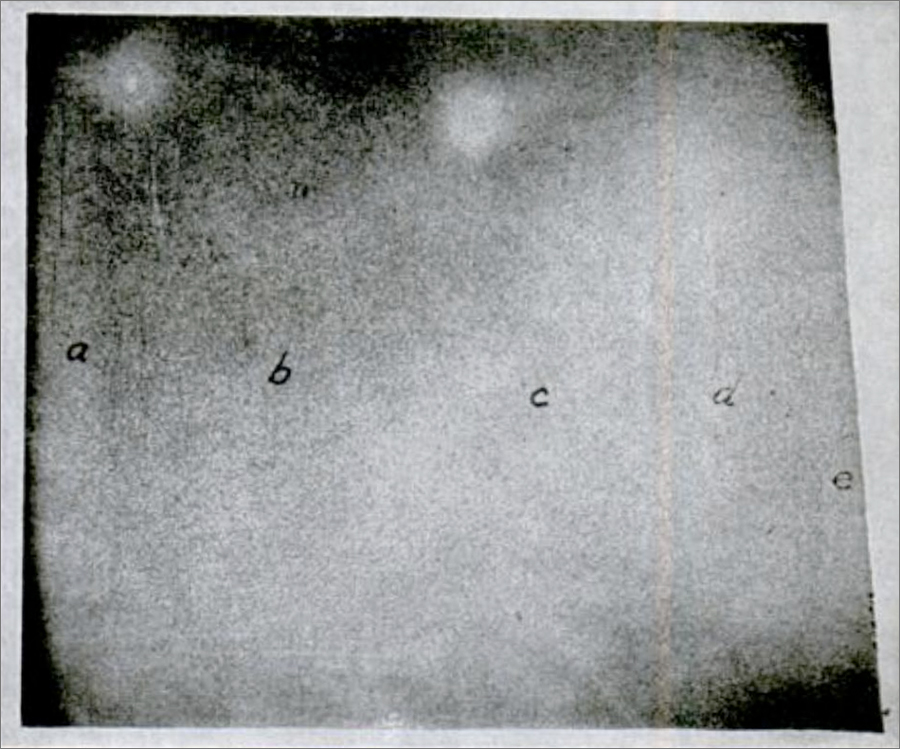a, b, c, d, and e

*
Fig. 10. — Defects in rails containing transverse fissures revealed by deep etching.
(a) Longitudinal section of the head of rail No 3 (Table 4) parallel to the tread. The specimen was magnetized then immersed in kerosene in which iron dust was suspended. The cracks indicated by a, b, c, d, and e were located.
(cropped from page, border replaced)
illustrating H. S. Rawdon and Samuel Epstein. Metallographic features revealed by the deep etching of steel. Technologic Papers of the Bureau of Standards No. 156 (1920)
University of Michigan copy, digitized May 12, 2011
—
“Cast-iron mud” from disks used for lapping was used for the purpose.
page 17
because Mira Schendel (1919-1988) is on my mind —
wikipedia
Mira Schendel at Tate Modern – in pictures.
tags:
alphabet; cast iron/ metallography; metallurgy; mud
H. S. Rawdon; S. Epstein; Mira Schendel